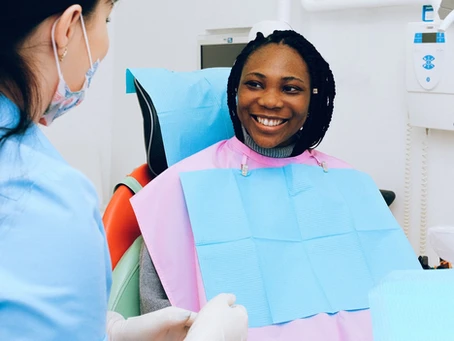Typically a part of the biannual teeth cleaning and exam, oral cancer screening is essential for identifying disease at the earliest stages, before the patient has any symptoms. Conventionally, this procedure is performed without any screening devices or augmented intelligence, which can result in overlooked disease or false positives. Using a tool with augmented intelligence, however, can not only deliver precise and objective results, but it also can be reimbursed by insurance companies.
nOra is an oral cancer screening device that uses intraoral imaging sensors that push beyond conventional white light to more precisely detect pre-cancerous and early-stage lesions. The USB-based peripheral with specialized illumination includes white and narrow band sources, customized ISP, and low light sensors. With it, tiny lesions appear black, showing a greater sensitivity and intensity than conventional white lights. Internally developed AI and NLP algorithms identify and classify cancerous & pre-cancerous lesions, providing immediate results.
While the dental hygienist may perform the screening with the device, the dentist must also evaluate and provide a final determination of the presented condition and diagnosis to report the service for reimbursement. Insurance companies typically require dentists to substantiate the oral cancer screening claim by submitting clinical notes that detail the visit, along with the resulting images. At the end of the procedure, nOra provides a full pdf report that can be sent to the insurance company as proof of the completed service.
Using a device for the oral cancer screening exam is a valuable and billable procedure that can cost the patient $25 to $65. The fee charged is a practice decision that is typically based on reimbursement.
The American Dental Association (ADA) assigned the CDT-5 code D0431 for insurance reimbursement. It is for a pre-diagnostic test using a screening device and not the actual biopsy procedure, which is a different code. It should only be billed in addition to the dentist’s completed physical and visual exams on the patient.
The CDT-5 code D0431 is described as “adjunctive pre-diagnostic oral cancer screening that aids in detection of mucosal abnormalities including premalignant and malignant lesions, not to include cytology or biopsy procedures.” Note that using a device like nGyn is a separate procedure beyond the conventional device-free oral cancer screening that’s typically included in the oral exam. This is why a screening service performed with a device requires an additional code.
In addition to the ADA’s code D0431, a dental practice might also be able to seek reimbursement from medical insurance. Dentists can bill medical insurance for some medically necessary dental procedures that screen for medical conditions. To meet the coding requirements to bill medical insurance for oral cancer screenings, a screening device must be used; it cannot be a visual evaluation only.
Two codes need to be used when billing medical insurance for an oral cancer screening. The first is the CPT code, or the procedure code, which is 82397 for chemiluminescent assay. Then the ICD-10 code or diagnosis code is Z12.81 for screening for malignant neoplasm of the oral cavity. These two codes, along with the procedure report, tell the medical insurance the patient’s medical story. While not all medical insurance companies will reimburse for these codes, many do.
Oral cancer screening is a potentially life saving service, allowing early treatment for the disease before the patient has symptoms. With the increased precision and objectivity that smart cancer screening devices bring, it is beneficial to offer the service to adult patients to accurately catch disease in the earliest pre-cancer stages.

